In a country with over 1.4 billion inhabitants, rail transport plays a crucial role in mobility and the economy. India’s railway network, one of the largest globally, faces immense challenges and opportunities. With extensive modernization projects and the introduction of high-speed rail routes, the subcontinent demonstrates its commitment to establishing railways as a sustainable and environmentally friendly mode of transport. We trace the journey of Indian Railways from the colonial era to the present day.
The Birth of Indian Railways
The history of Indian Railways is closely intertwined with British colonial rule. On November 18, 1852, the first train rolled from what was then Bombay to Thane – a milestone for the entire Asian continent. In the following decades, the rail network expanded rapidly: by 1901, it stretched over 35,000 km, and by 1930, it had grown to 52,000 km. An estimated 15 million people were already traveling by train daily, connecting all major cities.
Technical innovations were introduced early on: in 1925, electrification began, with Switzerland-developed electric locomotives EA/1 and EF/1, which were the fastest in the world at that time, reaching a top speed of 137 km/h.
Nevertheless, steam locomotives remained the backbone of Indian rail transport for a long time. Even in the 1980s, over 4,000 steam locomotives puffed through the country before they were finally phased out in the 1990s.
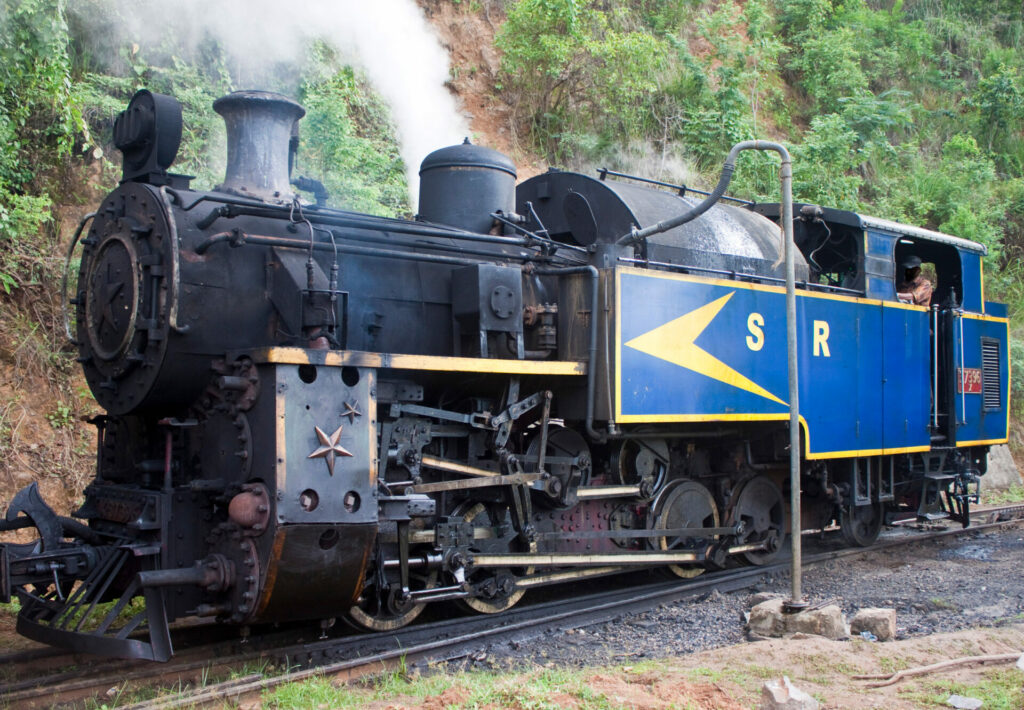
Facts and Figures about the Indian Railway Network
Today, the Indian railway network, spanning around 68,000 kilometers, is the fourth largest in the world. Annually, the trains transport about 8 billion passengers in nearly 13,000 trains per day – a logistical feat managed by the state-owned Indian Railways.
Freight volume has increased by almost a third over the past five years, reaching 1.5 billion tons. The railway plays a crucial role in the transportation of coal, fertilizers, cement, and grain: around one-third of all freight traffic is carried by rail. By 2030, this is expected to rise to 3 billion tons.
The “Golden Quadrilateral” connecting the metropolises of New Delhi, Kolkata, Chennai, and Mumbai forms the core of the network. Although it comprises only 16 percent of the total track length, it handles 50 percent of passenger traffic and 66 percent of freight traffic.
However, this success comes at a cost: many routes are overburdened, and the average speed of trains is decreasing. The expansion and modernization of the railway infrastructure were neglected for decades.
To be prepared for the future, India is investing heavily in modernizing its railway infrastructure. For the fiscal year 2024/2025 alone, nearly 31 billion US dollars have been allocated. About one-third of this amount is earmarked for investments in the expansion and modernization of the rail network.
For the following years up to 2030, the Ministry of Railways’ (MoR) “National Railway Plan” envisions an annual investment requirement of approximately 23 billion US dollars. This will support the completion of more than 2,000 railway infrastructure projects.
Full Steam Ahead: New Rail Corridors for More Efficient Connections
The Indian government has ambitious plans: by 2034, seven major routes between the largest metropolitan areas are to be expanded to two to four tracks. The cost: 50 billion US dollars. Additionally, three new rail freight corridors are planned, which are expected to be completed by 2030. These corridors aim to double rail freight traffic by 2030.
To achieve these goals, India plans to double the annual track expansion to 10,000 kilometers by 2028 – a massive challenge for engineers and construction companies.
India’s First High-Speed Rail Line: The Mumbai-Ahmedabad High Speed Rail Corridor
India’s entry into the world of high-speed trains is becoming a reality: The Mumbai-Ahmedabad High Speed Rail Corridor (MAHSR) is set to connect the two economic hubs in just two hours starting in 2028. Japanese Shinkansen trains from the E-series will travel the 510 km route at speeds of up to 320 km/h.
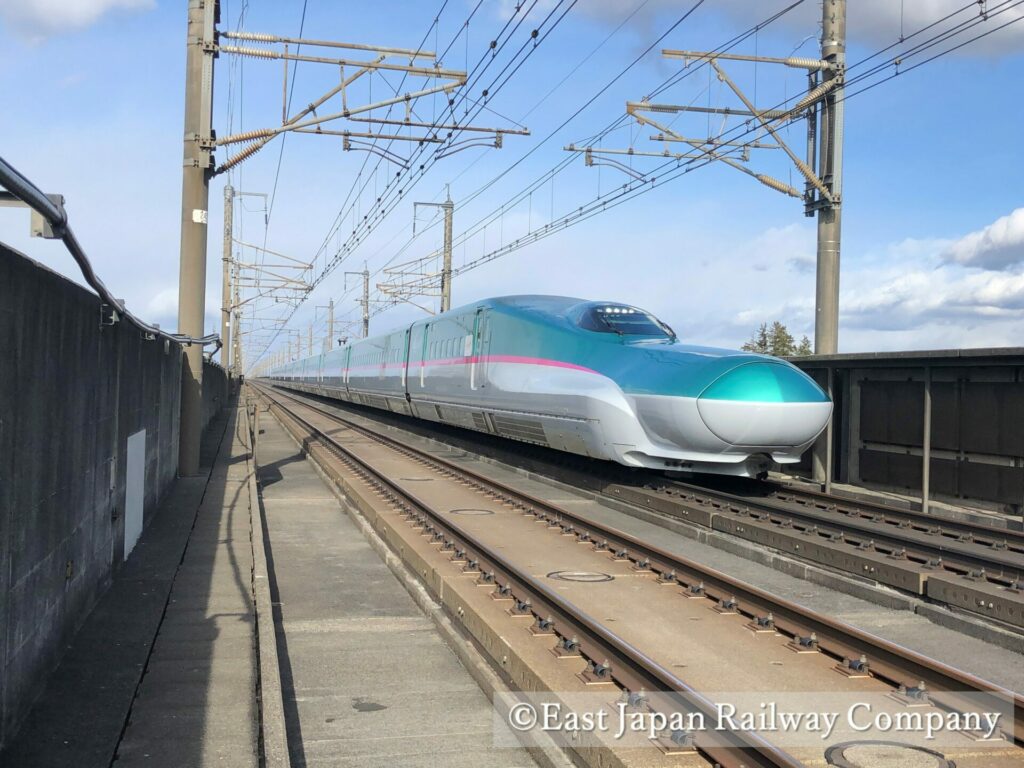
The approximately 17 billion US dollar project presents engineers with particular challenges: To avoid disturbing the sensitive ecosystem of Thane Creek in Mumbai, the tracks will be laid underwater. This tunnel will be India’s longest railway tunnel and the first underwater tunnel in the country.
Additionally, the high-speed corridor will be equipped with a modern earthquake early warning system in seismically active regions, which automatically cuts off power as soon as primary waves are detected. The choice of Japanese Shinkansen technology was partly due to safety reasons. The system will be equipped with the most advanced DS-ATC system to prevent collisions, as well as automatic braking in the event of speeding, among other features.
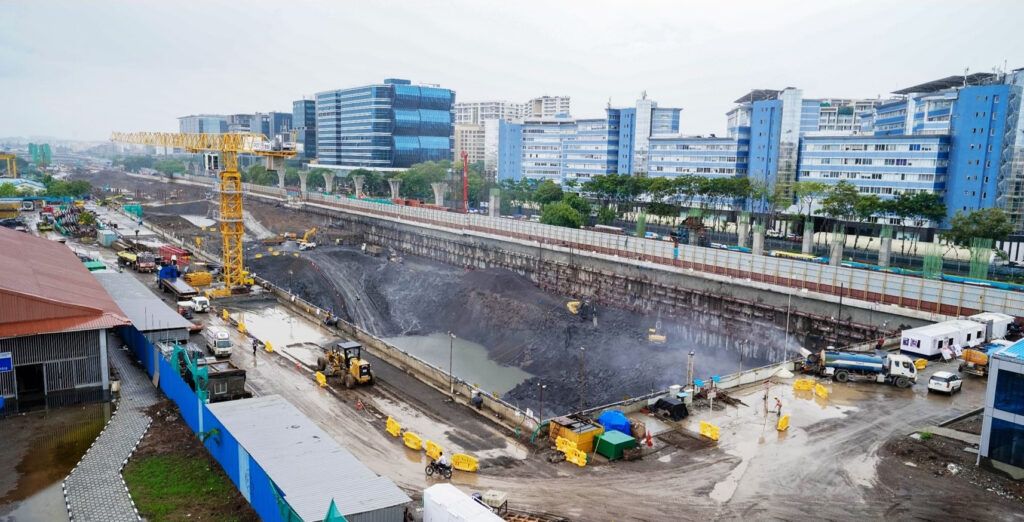
The MAHSR is just the beginning: India is planning a total of eleven high-speed corridors to prepare the country for the future. Vivek Kumar Gupta, Managing Director of the National High Speed Rail Corp. Ltd (NHSRCL), emphasized in an interview with Infrastructure Today that his team is well-equipped in every respect to work on additional corridors.
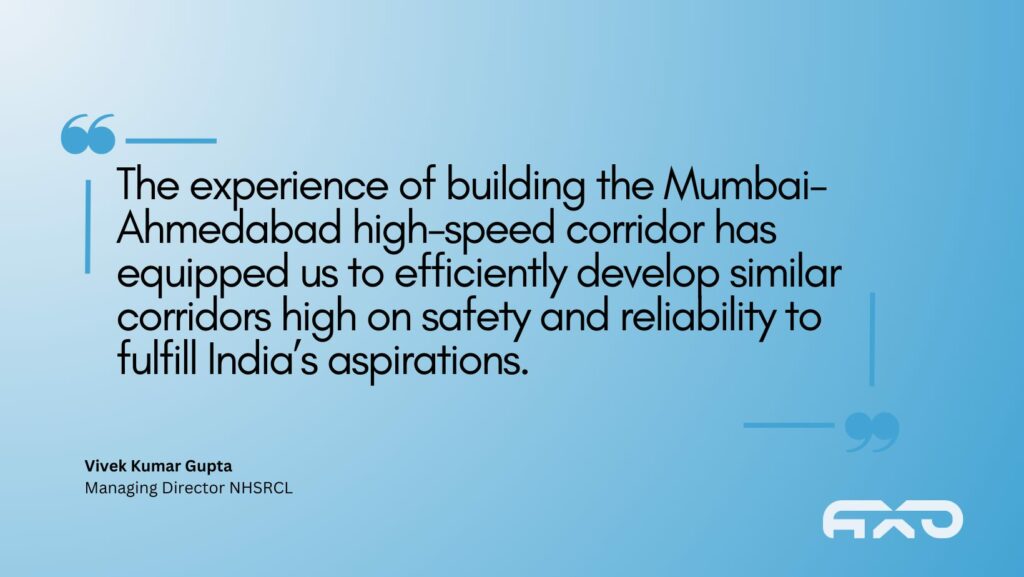
Modernization at Full Speed: New Trains for India
Indian Railways is heavily investing in new rolling stock: Up to 8,000 modern semi-high-speed locomotives are set to replace the outdated fleet in the coming years. The planners are primarily focusing on the domestically produced “Vande Bharat” and “Amrit Bharat” series. At the same time, 40,000 old coaches are being modernized. The braking, entry, and sanitation systems for these coaches are provided by German supplier Knorr-Bremse.
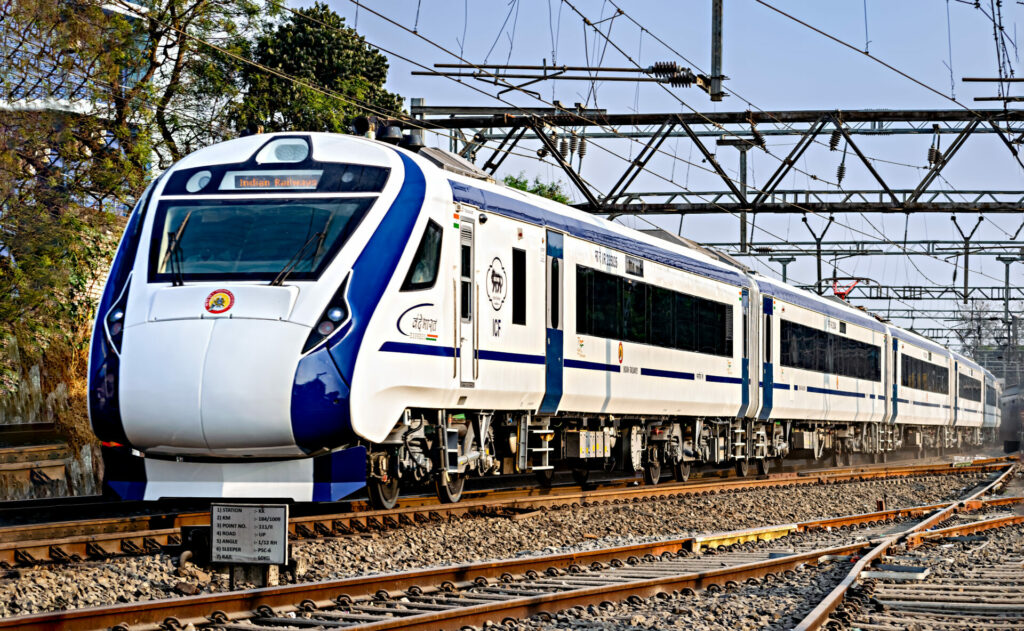
India is also upgrading its freight transport: 1,200 new electric locomotives from Siemens Mobility will soon be capable of hauling loads of up to 4,500 tons. This is the largest locomotive order in the history of Siemens Mobility, which includes not only the construction but also maintenance and service for a period of 35 years. The assembly and maintenance of the locomotives will be carried out in collaboration with the staff of Indian Railways.
Partnership for Sustainable Development: Germany’s Contribution to Indian Railways
The contracts with Knorr-Bremse and Siemens are not the only ways in which Germany is actively contributing to the development of railways in India. As part of the Partnership for Green and Sustainable Development, signed in May 2022, the German government will invest 10 billion euros in environmentally friendly transport projects by 2030. The KfW (Kreditanstalt für Wiederaufbau) is providing loans, for example, to finance the construction of a new suburban railway system in Bengaluru, India’s third-largest city.
Deutsche Bahn is also active on the subcontinent. Its subsidiary, Deutsche Bahn International Operations, is responsible for the operation and maintenance of the first Regional Rapid Transit System (RRTS). This system connects the cities of Delhi, Ghaziabad, and Meerut. The contract, which spans over 12 years, is valued in the hundreds of millions. Additionally, DB IO’s activities include training locomotive drivers and station staff as well as organizing the workshops.
Green Revolution on the Rails: India’s Railway Aims to Become Carbon Neutral
An ambitious goal: By 2030, Indian Railways aims to be carbon neutral. By the end of 2023, 95 percent of the broad-gauge network was already electrified, with the remainder to follow in 2024. To meet the growing electricity demand, Indian Railways is increasingly relying on renewable energy sources. Solar panels on station roofs are just the beginning—an additional 2,000 megawatts of solar and wind power plants are in the planning stages.
Also exciting: 35 hydrogen-powered trains are in the works—another step towards climate-neutral mobility.
Rail vs. Air: Why India Must Not Overlook the Railways
There is ongoing debate about the best approach for a country of this size with its volume of passengers and goods—especially considering costs, as building new airports or runways is significantly cheaper than developing a new rail line.
Yet, as Indian journalist V Bhagya Subhashini describes in her article for *Swarajya* magazine, India cannot ignore the railways.
High-speed trains offer critical advantages over airplanes: They not only connect major cities but also open up smaller towns along the route. Additionally, they increase the capacity of existing rail lines and improve passenger comfort and safety.
Another important aspect is environmental protection. These trains use locally generated electricity, reducing reliance on imported fuels and cutting greenhouse gas emissions. Moreover, they alleviate airport congestion by reducing short-haul flights and creating more capacity for long-haul flights.
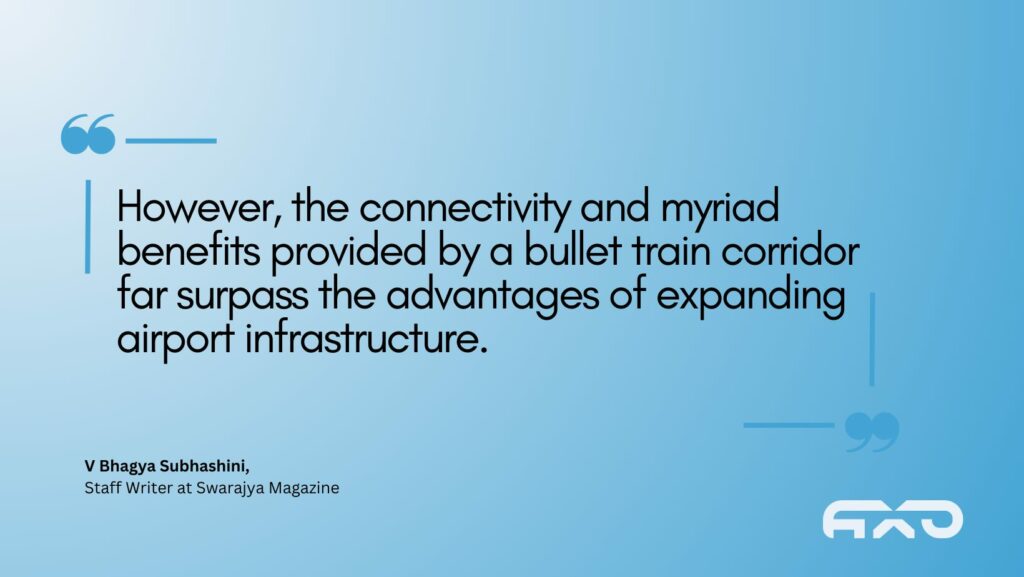
The economy also benefits from the expansion of railway infrastructure. Subhashini draws on experiences from China and Europe, which show that high-speed trains can boost the economy of entire regions. Cities along high-speed routes experience a GDP growth rate that is 2.7 percent higher than that of non-connected locations.
India’s Rail Vision: The Key to Sustainable Mobility
The current modernization projects and the introduction of high-speed lines like the Mumbai-Ahmedabad Corridor demonstrate that India understands the expansion of railways offers more than just logistical advantages. It also significantly contributes to economic development and climate protection. India’s commitment to a modern and sustainable railway system will be crucial in meeting the mobility needs of a growing population while achieving global environmental goals.
India’s investments in rail are more than just infrastructure projects—they are the key to sustainable mobility and economic growth on the subcontinent.


